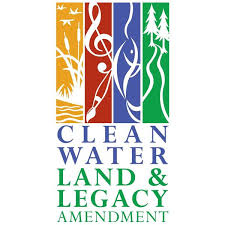Legacy committee hears $127 million proposal for Outdoor Heritage Fund
The beauty of Minnesota’s rural landscapes was part of the state brand long before Gov. Wendell Anderson was holding up a northern pike on a 1973 Time magazine cover that trumpeted “The Good Life in Minnesota.”
But, in 2008, the voters of Minnesota were asked: What’s it worth to you? Would it be worth increasing the state’s sales tax by 0.375% in order to make sure the state continued to have ample wetlands, prairies, forests and places where one could pull a lunker from the drink like Gov. Anderson?
Voters approved, and the Legacy Amendment became law, devoting a third of its proceeds to restoring, protecting and enhancing those natural areas. The specifics of where that money will go for fiscal year 2022 were on the table at Wednesday’s House Legacy Finance Committee meeting.
HF634 is sponsored by Rep. Jamie Becker-Finn (DFL-Roseville), one of two House members on the Lessard-Sams Outdoor Heritage Council, which crafted the bill’s recommendations. It’s always one of the two biggest bills of the year for the committee — the Clean Water Fund also gets 33% of Legacy funds — and, as amended, it was laid over for possible omnibus bill inclusion.
The bill’s companion, SF388, sponsored by Sen. Andrew Lang (R-Olivia), awaits action in the Senate Environment and Natural Resources Policy and Legacy Finance Committee.

“My only regret is that I wish I could take you on a field trip to see some of the projects,” Becker-Finn said, citing the constraints of COVID-19. “I’ve found it impossible to get across what it means to restore a prairie, and see it when it’s in bloom.”
Indeed, prairie restoration, protection and enhancement are a big part of the bill, accounting for 53% of the acreage and 45% of the funding. The second-largest area of financial focus is the state’s habitat for fish, game and wildlife (26% of funding), with protection in easement making up about half of the total.
The bill recommends $127.2 million of Legacy funds be directed toward 45 programs administered by 25 organizations, many of them in collaboration with one another.
Mark Johnson, executive director of the Lessard-Sams Outdoor Heritage Council, said collaborators include two state agencies, nine local units of government and 20 non-government organizations. Figuring prominently in the projects are the Department of Natural Resources, Board of Soil and Water Resources and Minnesota Land Trust.
The proposed outlay is expected to leverage an additional $23.3 million in federal, state and private conservation funding.
Johnson said that, if approved, the proposals would result in the restoration, enhancement and/or protection of 96,871 acres of wildlife habitat and 81 miles of shoreline. Only 8% of the funding would go toward new projects, with the other 92% invested in new phases of ongoing programs like the DNR Conservation Partners grant program and the U.S. Fish and Wildlife Service’s habitat conservation easement program.
Activities funded by the bill would include native prairie protection, wetland restoration, trout stream enhancement, public wildlife land enhancements, shallow lake enhancement, forest fragmentation prevention, strategic land acquisition in fee and conservation easement.
Both Rep. Steve Green (R-Fosston) and Rep. Paul Anderson (R-Starbuck) expressed concern that too much land is being purchased by the state and nonprofits and taken off the tax rolls.
“A third of the state is now in government hands,” Green said. “It’s like if someone took away a third of your income and then said now go pay your bills. That’s what we’re doing to counties that are losing a third of their land.”
Becker-Finn said all projects involve willing sellers. But Green is concerned about private buyers losing out.
“Many have told me that they’ve been outbid for land by Pheasants Forever and others,” he said. “How far until you say enough is enough? We just continue to buy.”
Rep. Dean Urdahl (R-Grove City) asked if farmland is being purchased for these projects.
“It depends upon the area of the state,” Johnson replied. “In Martin County, there may be farmland beside a wetland that will be turned over to native prairie species. The project managers try not to target prime farmland because people tend not to sell it and it’s expensive.”
By a voice vote, the committee approved an amendment that would add $3 million for the DNR “No Child Left Inside” conservation practices education program.
Related Articles
Search Session Daily
Advanced Search OptionsPriority Dailies
Speaker Emerita Melissa Hortman, husband killed in attack
By HPIS Staff House Speaker Emerita Melissa Hortman (DFL-Brooklyn Park) and her husband, Mark, were fatally shot in their home early Saturday morning.
Gov. Tim Walz announced the news dur...
House Speaker Emerita Melissa Hortman (DFL-Brooklyn Park) and her husband, Mark, were fatally shot in their home early Saturday morning.
Gov. Tim Walz announced the news dur...
Lawmakers deliver budget bills to governor's desk in one-day special session
By Mike Cook About that talk of needing all 21 hours left in a legislative day to complete a special session?
House members were more than up to the challenge Monday. Beginning at 10 a.m...
About that talk of needing all 21 hours left in a legislative day to complete a special session?
House members were more than up to the challenge Monday. Beginning at 10 a.m...